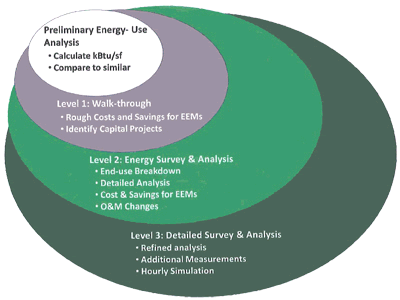
ASHRAE (American Society of Heating, Refrigerating, and Air-Conditioning Engineers) Level 2 energy audits are detailed evaluations of a building’s energy usage. Unlike Level 1 audits, which are preliminary assessments, Level 2 audits involve a more thorough analysis. They include a detailed energy survey and analysis, energy use calculations, and a comprehensive report outlining energy conservation measures (ECMs) along with their potential cost savings and environmental impact.
The Sustainability Connection
1. Identifying Energy Inefficiencies
ASHRAE Level 2 audits play a crucial role in sustainability by identifying areas of energy wastage within a building. By pinpointing inefficiencies in lighting, HVAC systems, insulation, and other components, these audits enable businesses to rectify these issues, thus reducing their carbon footprint.
2. Implementing Energy Conservation Measures (ECMs)
One of the primary outcomes of Level 2 audits is the identification of ECMs. These measures can range from simple behavioral changes to complex technological upgrades. By implementing these measures, businesses can significantly reduce energy consumption, leading to both financial savings and a positive environmental impact.
3. Enhancing Indoor Environmental Quality
Sustainable buildings are not just about energy efficiency; they also focus on creating healthier indoor environments. ASHRAE Level 2 audits often lead to improvements in indoor air quality and thermal comfort. This not only enhances the well-being of occupants but also aligns with the principles of sustainability by promoting human health and productivity.
4. Long-Term Sustainability Planning
Level 2 audits provide a roadmap for long-term sustainability. By understanding a building’s energy usage patterns, businesses can plan for the future effectively. This might involve incorporating renewable energy sources, adopting advanced energy management systems, or exploring innovative technologies that align with sustainability goals.
ASHRAE Level 2 energy audits serve as a cornerstone for sustainable practices in the realm of energy efficiency. By identifying inefficiencies, proposing actionable solutions, and fostering a mindset of continuous improvement, these audits empower businesses to embrace a more sustainable future. As we move forward, it’s imperative for organizations to recognize the importance of such audits and integrate them into their sustainability strategies. By doing so, we can pave the way for a greener, more energy-efficient world, one building at a time.